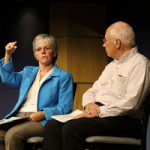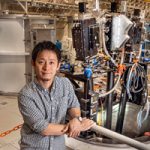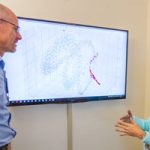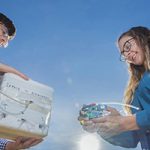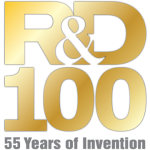Lowering the bar for hydrogen-powered technology
The Hydrogen Materials Advanced Research Consortium, or HyMARC, a multilab collaboration co-led by Sandia, is developing two types of hydrogen storage materials to meet challenging energy density targets set forth by DOE. The newly expanded collaboration is using the most promising strategies to optimize the materials for future use in vehicles.
Strategic Priority No. 6
Strategic Priority No. 6, “Deploy outstanding engineering, science and technology to our mission,” is about actively supporting research at Sandia that takes full advantage of our strength to develop creative, cutting-edge solutions to emerging national security challenges that would have been unimaginable only a few years ago.
Younger: A Sputnik moment is coming
Laboratories Director Steve Younger and Chief Research Officer Susan Seestrom took the stage at the Steve Schiff Auditorium Aug. 26 to discuss “discovery science” and what it means for Sandia. The talk was the latest installment of the New Research Ideas Forum.
Experiments at sun temperature offer solar model solutions
Physicists at Sandia’s Z machine have found that a widely used astronomical model underestimates the energy blockage caused by free-floating iron atoms. Now, Sandia’s experimental opacity measurements can help bloodlessly resolve a major discrepancy in how the 40-year-old Standard Solar Model uses the composition of the sun to predict the behavior of stars.
‘Research Club’ enhances research culture and capabilities
Sandia Fellow Kathy Simonson has started a "Research Club" to help Sandia researchers better prepare Laboratory Directed Research and Development ideas and proposals. Having reviewed hundreds of research proposals during her career, Kathy noticed many of the same issues kept cropping up in weaker proposals, which gave her the idea.
Going up!
New Sandia balloon-borne infrasound sensor array detects explosions
Sandians take home five R&D 100 Awards
Sandians take home five R&D 100 Awards
Headlights of a laboratory
Laboratory Directed Research & Development (LDRD) was established in 1990 by Congress to let scientists at national laboratories do creative, innovative, independent research.


